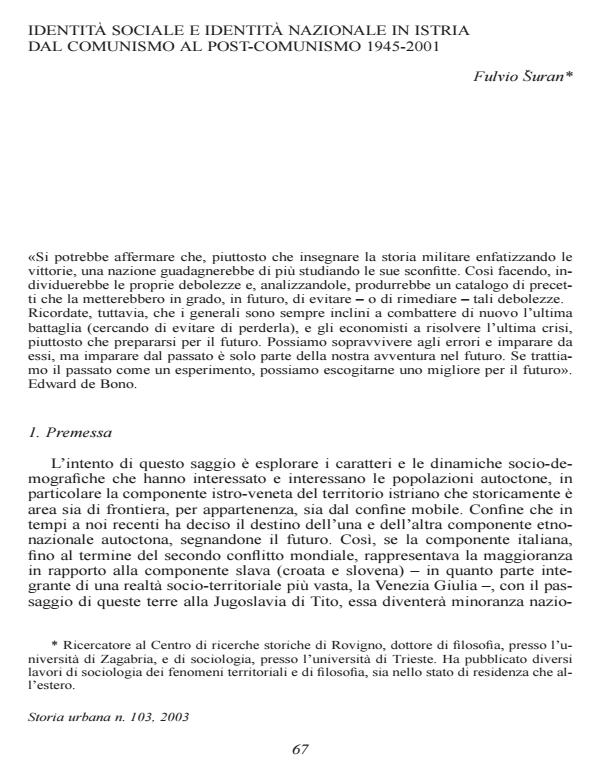Identità sociale e identità nazionale in Istria dal comunismo al post-comunismo 1945-2001
Titolo Rivista STORIA URBANA
Autori/Curatori Fulvio Suran
Anno di pubblicazione 2004 Fascicolo 2003/103
Lingua Italiano Numero pagine 22 P. Dimensione file 149 KB
DOI
Il DOI è il codice a barre della proprietà intellettuale: per saperne di più
clicca qui
Qui sotto puoi vedere in anteprima la prima pagina di questo articolo.
Se questo articolo ti interessa, lo puoi acquistare (e scaricare in formato pdf) seguendo le facili indicazioni per acquistare il download credit. Acquista Download Credits per scaricare questo Articolo in formato PDF

FrancoAngeli è membro della Publishers International Linking Association, Inc (PILA)associazione indipendente e non profit per facilitare (attraverso i servizi tecnologici implementati da CrossRef.org) l’accesso degli studiosi ai contenuti digitali nelle pubblicazioni professionali e scientifiche
This essay looks into the trends and social dynamics that have affected and still affect the native population, especially the istro-venetian population of Istria, a territory that has always been an ethnically mixed area with a mobile border. In the recent past, that border determined the fate of the two autochthonous ethno-national components, altering their future. The Italian component outnumbered the Slav (Croat and Slovenian) population until the end of WW II, when Istria was still integral part of the wider region of Venezia-Giulia. After Tito’s Yugoslavia gained control over this area, the Italian community became a national minority unable to fit in the new social context, also because it was expected to serve as conveyor belt for Yugoslav socialism and populism. The study has no pretence of exhaustiveness; it intends to contribute to the dissemination of information on some distinctive traits and challenges that accompanied the changes in this border region. This survey may also provide some useful insights on the present situation. The most significant transformations of Istria in the last 50 years are also highlighted, with a special focus on the Italian component, considering it both as Italian community (of those who remained) and as Italian National Minority.
Fulvio Suran, Identità sociale e identità nazionale in Istria dal comunismo al post-comunismo 1945-2001 in "STORIA URBANA " 103/2003, pp , DOI: